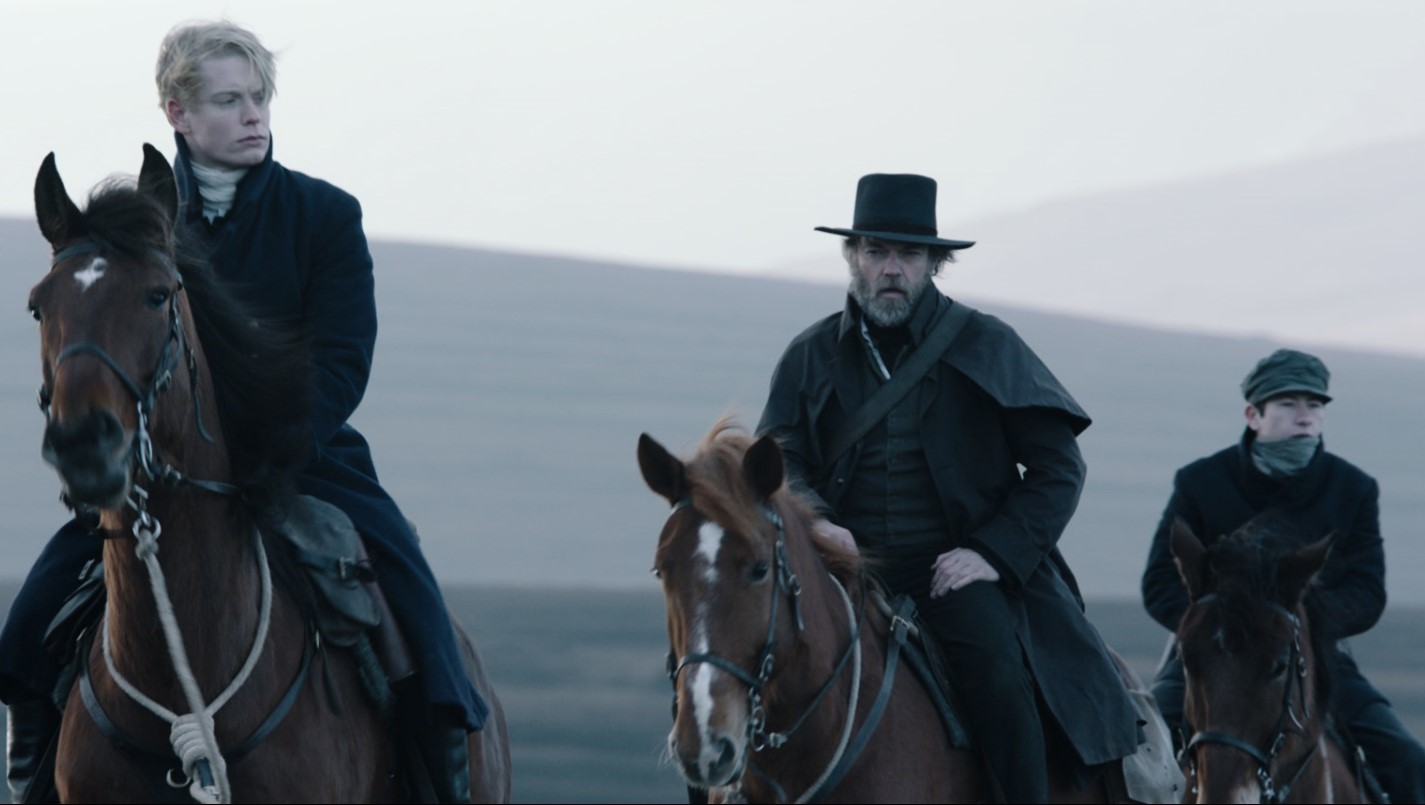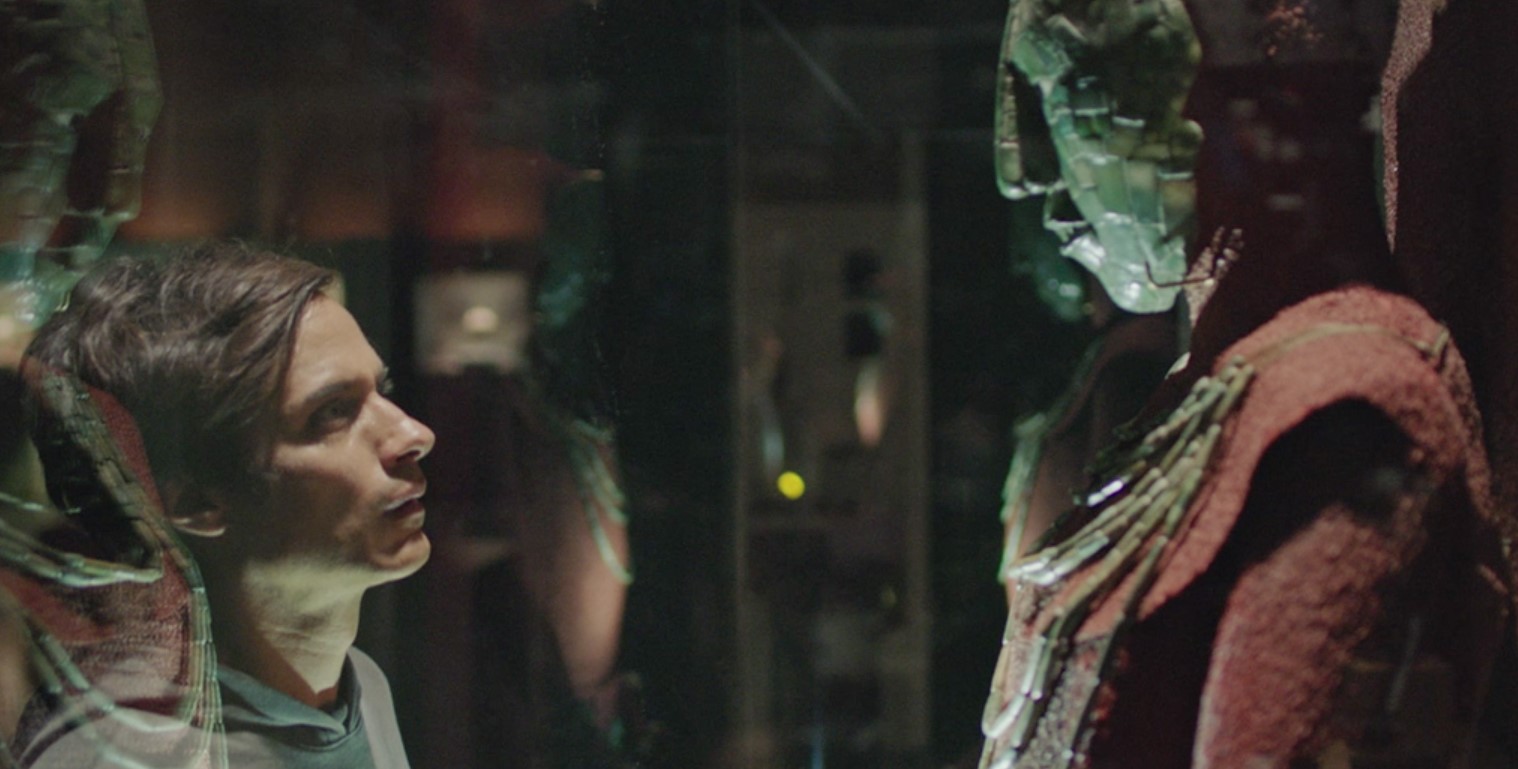A film is a collage of a variety of different art forms. One of its integral parts is music and yet again, this year’s Berlin Film Festival managed to prove how important the choices of soundtracks and scores are. Attending the Berlinale for the first time, NBHAP has taken a look at many films, especially at the music incorporated within. Here are our highlights from this year’s festival.
‘Isle Of Dogs’

© 2018 Twentieth Century Fox
With vivid images and lovable outsiders as protagonists, the 68th Berlinale started off with Wes Anderson’s Isle of Dogs. Even though it isn’t his first animation, it is the first animation to ever open the Berlin Film Festival. Wes Anderson’s tribute to dogs and dog lovers is just as adventurous as The Grand Budapest Hotel, which opened the Berlin Film Festival three years prior in 2014. Yet again, Wes Anderson shows what a remarkable storyteller he is. The arch of the story is neatly divided into parts, concluding with a grand finale and showing the future prospects of the characters as a finishing touch. Lending their voices to the animated dogs and humans, Bill Murray and Jeff Goldblum return as collaborators. But there are also newcomers to the gang, such as Greta Gerwig voicing a rebellious exchange student. However, another longstanding collaboration continuing with Isle of Dogs is between Anderson and award-winning composer Alexandre Desplat. They teamed up on multiple films before, lastly incorporating Eastern-European sounds into the score of The Grand Budapest Hotel. Isle of Dogs goes even further to the East, all the way to Japan. Using traditional Japanese instruments such as Taiko drums, it is a strong score to accentuate the danger looming over the protagonists. The soundscape of the film is completed with I Won’t Hurt You by The West Coast Pop Art Experimental Band to accompany the adventure of the dogs and a kid pilot, telling a tale of a blossoming friendship.
‘Black 47’
 The strong bond of family and friends is a theme in Black 47, asking the question of what happens to a person when they lose all the people they love in the meanest circumstances. Set in Ireland during the potato famine in 1847 , the film directed by Lance Daly recounts the fate of deserter Martin Freeny (James Frecheville), who returns to his homeland after fighting for the crown in Afghanistan and realises he has lost everything that once meant something to him. The colour grading appears like an eerie filter, which makes the scenery seem bleak and hopeless. The only shimmer of hope is found in form of music. Especially in the beginning, when the family of the deserter reunites. They sit around a fire and exchange dreams of immigrating to America, singing Irish folk songs. The words of the song (performed by actress Sarah Greene) sound magical in their native tongue of Irish Gaelic. Composed by Brian Byrne, the score makes use of Irish folk themes throughout the film. Everything takes a darker turn after the reunion of the loved ones, starring Huge Weaving and up-and-coming actors such as Freddie Fox and Barry Keoghan in the roles of the antagonists.
The strong bond of family and friends is a theme in Black 47, asking the question of what happens to a person when they lose all the people they love in the meanest circumstances. Set in Ireland during the potato famine in 1847 , the film directed by Lance Daly recounts the fate of deserter Martin Freeny (James Frecheville), who returns to his homeland after fighting for the crown in Afghanistan and realises he has lost everything that once meant something to him. The colour grading appears like an eerie filter, which makes the scenery seem bleak and hopeless. The only shimmer of hope is found in form of music. Especially in the beginning, when the family of the deserter reunites. They sit around a fire and exchange dreams of immigrating to America, singing Irish folk songs. The words of the song (performed by actress Sarah Greene) sound magical in their native tongue of Irish Gaelic. Composed by Brian Byrne, the score makes use of Irish folk themes throughout the film. Everything takes a darker turn after the reunion of the loved ones, starring Huge Weaving and up-and-coming actors such as Freddie Fox and Barry Keoghan in the roles of the antagonists.
‘Mueso’
 Music is a classic way of embedding a film into a cultural context, making statements about the setting and where the characters come from. Another fine film embracing this concept is the Mexican film Museo. The score of Tomás Barreiro helps to underline the portrait of a simple Mexican family and the meaning of their heritage, which is threatened to be lost forever as a result of a clumsy heist at the National Museum of Anthropology in Mexico City. After working together on Güeros, it is another collaboration of Barreiro and director Alonso Ruizpalacios, starring Gael García Bernal and Leonardo Ortizgris as the unlucky heroes.
Music is a classic way of embedding a film into a cultural context, making statements about the setting and where the characters come from. Another fine film embracing this concept is the Mexican film Museo. The score of Tomás Barreiro helps to underline the portrait of a simple Mexican family and the meaning of their heritage, which is threatened to be lost forever as a result of a clumsy heist at the National Museum of Anthropology in Mexico City. After working together on Güeros, it is another collaboration of Barreiro and director Alonso Ruizpalacios, starring Gael García Bernal and Leonardo Ortizgris as the unlucky heroes.
‘7 Days In Entebbe’

© Liam Daniel
7 Days in Entebbe makes a statement about nationality and belonging in form of music in a similar way, but there is an additional layer to it. The director José Padilha uses a particular piece of Israeli music populated internationally by a choreography of Ohad Naharin, and the dance is featured in the film as well. The song and dance in question is Echad Mi Yodea from Decadance by Naharin’s Batsheva Dance Company, one of Israel’s most famous dance ensembles. The film tells the story of the hijacking of the Air France Flight on 27 June, 1976, when two members of the PFLP (The Popular Front for the Liberation of Palestine) and two German members of the left-wing extremist group Revolutionary Cells seized control of the flight. They manoeuvred the flight into Entebbe, where they were supported by Ugandan dictator Idi Amin and planned on negotiating with Israel, holding over a hundred hostages for an entire week. Daniel Brühl and Rosamund Pike take on the main roles of the German hijackers. One of the Israeli soldiers to strike against the attackers (Ben Schnetzer) is in a relationship with a dancer (Zina Zinchenko), who is dancing the main part of the falling man in the dance, fighting an endless struggle. When the dance and the action scenes cross-cut, it is a strong stylistic device. The struggling and screaming dancers seem to give a voice to the Israeli people. The film ends on a bitter note, reminding the audience that there is still no peace between Israel and Palestine up until this day.
‘In the Aisles’

© Sommerhaus Filmproduktion / Anke Neugebauer
But it is not only the films with great political relevance, which leave a mark on the audience at the film festival. The highly anticipated German entry to the competition In den Gängen (In the Aisles) shows the magic in everyday life. Its protagonists are staff members of a supermarket chain. It’s all about the friendships between the aisles, between the men of the beverages and the ladies of the sweets. And about the difficulties of driving a forklift. It sounds trivial, but it is all in the details – and then there is the music. The first ride on the forklift of protagonist Christian (Franz Rogowski) is smoothly accompanied by Son Lux‘ Easy. A brilliant choice, after the film already opened to forklifts zooming along the aisles of the supermarket to Tchaikovsky‘s Flower Waltz, dancing their own little ballet of forklifts. It is a wonderful way of showing the extraordinary moments in everyday life.
‘Damsel’

© Strophic Productions Limited
Showing things in a different way and breaking with stereotypes is also the purpose of Damsel, directed by the brothers David and Nathan Zellner. Right in the middle of the film, almost like a surprise given away too soon, there is a great twist to break with the cliché of the damsel in distress. But Mia Wasikowska breaks the stereotype amazingly. Damsel is a western with a modern touch. The music by The Octopus Project is reinventing the sound of the western, accompanying clog dancing and rangers riding along the vast American prairie. Making up for a lot of laughter during the screening is another moment, when Robert Pattinson’s character professes his love to his darling girl with a rendition of a self-written song called Honey Bun. It befits the love-sick and besotted cowboy that he is, who is often referred to as a “pussy” throughout the film, also playing with the stereotype of men having to be strong all the time. Honey bun, honey bun.
‘Picnic at Hanging Rock’

© FremantleMedia Australia
Another experiment of a period piece with modern music, is the Australian series Picnic at Hanging Rock, in which Natalie Dormer, mostly known as Lady Margaery from Game of Thrones, takes the lead. It’s great to see small-screen series represented more and more at the Berlinale, as this particular form of storytelling is still increasing in quality and popularity with streaming services such as Netflix and Amazon Prime. Picnic at Hanging Rock is set in 1900, adapting the novel from 1967 and the beloved film adaptation from 1975, and tells the story of a boarding school of young women, particularly four girls who vanish in the Australian bush. The first two episodes screened at the Berlinale, leave the audience wanting to know more about how the haunting mystery with emancipated women at the centre continues. The style of the show feels a little bit like Sofia Coppola‘s Marie Antoinette from 2006, when a pink script flashes across the screen. It is just as stylish, maybe what the content of an Instagram feed from 1900 would have looked like. The contemporary score by Ceszary Skubiszewski supports the edgy feel of the show.
‘Utøya – 22. Juli’

© Agnete Brun
And a film, which should be mentioned not because of the music, but because of the lack thereof: Utøya 22. Juli by Norwegian director Erik Poppe. In realtime, it re-tells the sickening 72 minutes of the Breivik attack from 2011. It is probably one of the most debated films of the festival. Is it too soon to make a film out of the attack? Is it the right way to show something gruesome like that? Should it be shown at all? Is it respectful towards the survivors? It is the most shocking experience with the way the camera takes the perspective of someone running from the shots being fired everywhere. It seems like the cinematographer (Martin Otterbeck) is running away from the trauma, stumbling and freezing in motion alike the protagonists. It feels real, like no other film at the festival. There is nowhere to run, there is nowhere to hide. The audience is exposed to sheer terror.
All in all the films mentioned above are worth watching, especially when it comes to the music. Of course, there were documentaries as well, and especially three documentaries with music as a main theme: Shut Up and Play the Piano about the musical genius of Chilly Gonzales, Matangi / Maya / M.I.A. about the life of pop icon M.I.A. and Songwriter about the songwriting process of Ed Sheeran’s third album. In the coming days NBHAP will feature more about these films, including individual interviews with the directors. It’s been a great festival, and we can’t wait for next time. See you later, Berlinale!


